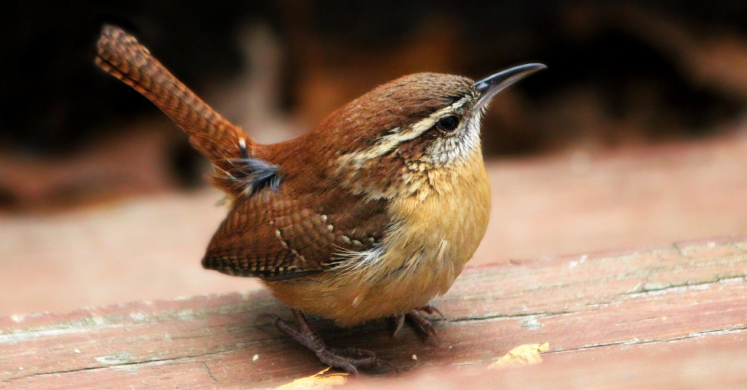Blog

#bioPGH Blog: Carolina Wrens
 A resource of Biophilia: Pittsburgh, #bioPGH is a weekly blog and social media series that aims to encourage both children and adults to reconnect with nature and enjoy what each of our distinctive seasons has to offer.
A resource of Biophilia: Pittsburgh, #bioPGH is a weekly blog and social media series that aims to encourage both children and adults to reconnect with nature and enjoy what each of our distinctive seasons has to offer.
Out of the corner of my eye, it looked like a crumpled, little brown leaf was bouncing up and down the hillside behind my house. Once I was finally able to spot the movement directly, I could see that it was no leaf at all — it was a Carolina wren! The trees have all lost their leaves, which ironically makes birdwatching both easier and more difficult at the same time; birds on leafless branches are clearly visible while small, well-camouflaged critters blend into the leaf litter. The latter was certainly true of my diminutive neighbor, hopping about the hillside.
Carolina wrens (Thryothorus ludovicianus) are rusty-brown birds in the (you guessed it) wren family, Troglodytidae. They largely eat insects and spiders, but during the winters especially, they will branch out to plant material like seeds and berries — including the berries of poison ivy! Creative cavity nesters, Carolina wrens will seek out nesting spaces in holes, openings in trees, tree stumps, bird houses, human houses, backyard grills, discarded shoes, and a variety of other natural or man-made spots that provide a snug fit for a wren family. And since these birds are year-round residents, you can find them across Eastern North America in any season.
If you don’t mind going down a “brainy” rabbit hole, Carolina wrens are also an interesting example of male and female differences in songs — and brains! If we take a step back, songbirds have a region in their brain called the HVC, or high vocal center. It’s the part of their brain that is correlated with vocalizations as adults. Within the HVC, birds have what’s called a song control system. The song control system sounds like a fancy way to keep music playing at a party, but in birds, it’s a cluster of neurons related to a bird’s ability to learn songs. As adults, male Carolina wrens have much larger song control systems than females, which correlates with their wider variety of calls as adults. While both males and females have a variety of vocalizations, only males “sing” songs — and they need all of those neurons and songs to impress the females if they want a mate!
Connecting to the Outdoors Tip: Have a listen below and see if you hear any of these around you backyard feeder!
Male’s Song - Often described as sounding like tea kettle, tea kettle, tea kettle.
And a bit of a variation on the song, which almost sounds more like Germany, Germany, Germany.
Cheer-cheer-cheer call – another vocalization that seems to be primarily male.
Chatter call (could be either male or female)
Continue the Conversation: Share your nature discoveries with our community by posting to Twitter and Instagram with hashtag #bioPGH, and R.S.V.P. to attend our next Biophilia: Pittsburgh meeting.
Resources
Cornell Lab of Ornithology: Carolina Wren
Audubon Society: Carolina Wren
Photo credits: Cover, Pixabay: Header, Pexels

